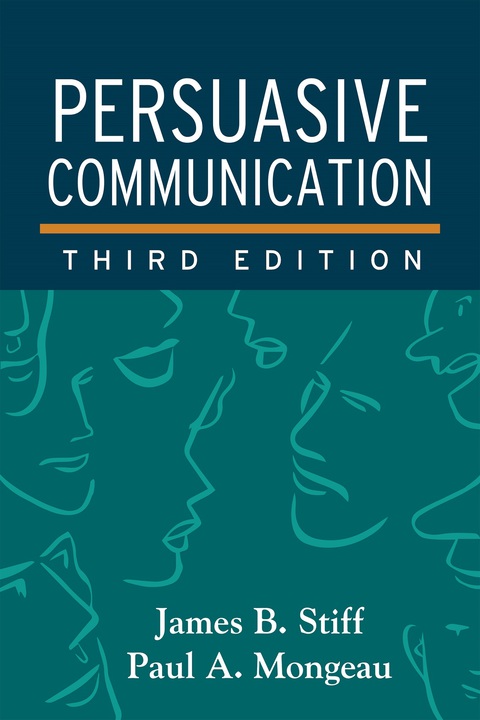Description
Efnisyfirlit
- Cover
- Title Page
- Copyright Page
- Dedication Page
- Preface
- Acknowledgments
- Contents
- PART I. FUNDAMENTAL ISSUES IN PERSUASION RESEARCH
- CHAPTER 1. Concepts, Definitions, and Basic Distinctions
- Defining Persuasive Communication
- BOX 1.1. The Rise and Fall of Herman Cain
- Considering the Attitude Construct
- BOX 1.2. How Are Attitudes Measured?
- The Role of Attitude in Persuasion Research
- Summary
- Notes
- CHAPTER 2. Methods of Investigating Persuasive Communication
- Commonsense versus Social Science Theories
- BOX 2.1. Conventional Wisdom on Trial
- Scientific Methods of Persuasive Communication Inquiry
- BOX 2.2. Evaluating Experimental Treatments
- Cumulating the Findings of Individual Investigations
- Summary
- Notes
- CHAPTER 3. Examining the Attitude–Behavior Relationship
- The LaPiere Study
- Characteristics of Attitudes and Behaviors
- Ajzen and Fishbein’s Reasoned Action Theories
- BOX 3.1. Behavioral Norms and College Drinking Behavior
- Factors Moderating the Attitude–Behavior Relationship
- BOX 3.2. Vested Interest Motivates Behavior
- Summary
- Notes
- CHAPTER 4. The Effects of Behavior on Attitudes
- The CAA Research Paradigm
- A Theory of Cognitive Dissonance
- BOX 4.1. Psychological Commitment in Relation to the Low-Ball Technique
- BOX 4.2. Self-Perception and Fish Camp
- Self-Perception Theory
- Arousal, CAA, and Attitude Change
- Integrating Cognitive Dissonance and Self-Perception Theories
- Applications of Cognitive Dissonance Theory
- Summary
- Note
- CHAPTER 5. Cognitive Response Models of Persuasion
- The Persuasive Effects of “Mere Thought”
- BOX 5.1. Mere Thought and Performance Evaluations
- The ELM
- BOX 5.2. Johnnie Cochran and the Peripheral Route to Persuasion
- The HSM
- BOX 5.3. Assessing the Credibility of Witness Testimony
- The Unimodel
- Summary
- Notes
- PART II. COMPONENTS OF PERSUASIVE TRANSACTIONS
- CHAPTER 6. Source Characteristics in Persuasive Communication
- Source Credibility
- BOX 6.1. Credibility (Like Stock Market Investments) Can Be Here Today and Gone Tomorrow
- Source Credibility and Attitude Change
- Attributions about Message Sources
- BOX 6.2. Expectancy Confirmation and Familiar Speakers
- Persistence of Credibility Effects
- Related Source Characteristics
- BOX 6.3. Guilt by Association
- Summary
- Notes
- CHAPTER 7. Persuasive Message Characteristics: Rational Appeals
- A Note about Rational and Emotional Appeals
- Rational Persuasive Appeals
- Persuasive Effects of Evidence
- BOX 7.1. Politicians’ Use of Statistical and Narrative Evidence
- BOX 7.2. “Birthers” Need No Evidence
- Modeling the Effects of Rational Appeals
- One- and Two-Sided Rational Appeals
- BOX 7.3. Contrast Advertisements in Political Campaigns
- Filling in the Blanks
- Summary
- Notes
- CHAPTER 8. Persuasive Message Characteristics: Emotional Appeals
- Fear Appeals
- BOX 8.1. Fear Appeals in Driver Training Classes
- BOX 8.2. Response Efficacy, Self-Efficacy, and Lung Cancer
- Guilt and Persuasion
- BOX 8.3. Has Cognitive Dissonance Morphed into Reactive Guilt?
- The Choice between Rational and Emotional Appeals
- Summary
- Notes
- CHAPTER 9. Receiver Characteristics
- Sex/Gender Differences in Persuadability
- BOX 9.1. Knowledge and Persuadability in Juries
- Message Discrepancy and Persuasion
- BOX 9.2. Source Derogation and Message Discrepancy
- Receiver Involvement and Persuasion
- Function Matching
- Summary
- Notes
- CHAPTER 10. Characteristics of Persuasive Settings
- Traditional Modality Research
- Online Persuasion
- BOX 10.1. Social Media and the Arab Spring
- Persuasive Effects of Distracting Stimuli
- Persuasive Influences of Collectives
- Polarization in Group Decisions
- BOX 10.2. Group Majorities in Jury Deliberations
- Summary
- PART III. PERSUASION MODELS
- CHAPTER 11. Models of Interpersonal Compliance
- Compliance-Gaining Message Selection
- Sequential Request Strategies
- BOX 11.1. FITD and Political Campaign Contributions
- BOX 11.2. The Prius Lowball
- Summary
- Notes
- CHAPTER 12. Producing and Resisting Influence Messages
- Goals, Plans, and Action in Interpersonal Influence
- BOX 12.1. Plan Complexity and Witness Testimony
- Message Design Logics and Message Production
- Resisting Influence Attempts
- Summary
- Notes
- CHAPTER 13. Persuasive Communication Campaigns
- Persuasive Communication Campaigns
- BOX 13.1. Microtargeting in Political Campaigns
- Social Cognitive Theory
- Inoculation Theory
- BOX 13.2. Refutational Arguments in the Courtroom
- BOX 13.3. Preemptive Refutation in Political Campaigns
- Summary
- Notes
- Epilogue
- References
- Index
- About the Authors
- About Guilford Press
- Discover Related Guilford Books






Reviews
There are no reviews yet.